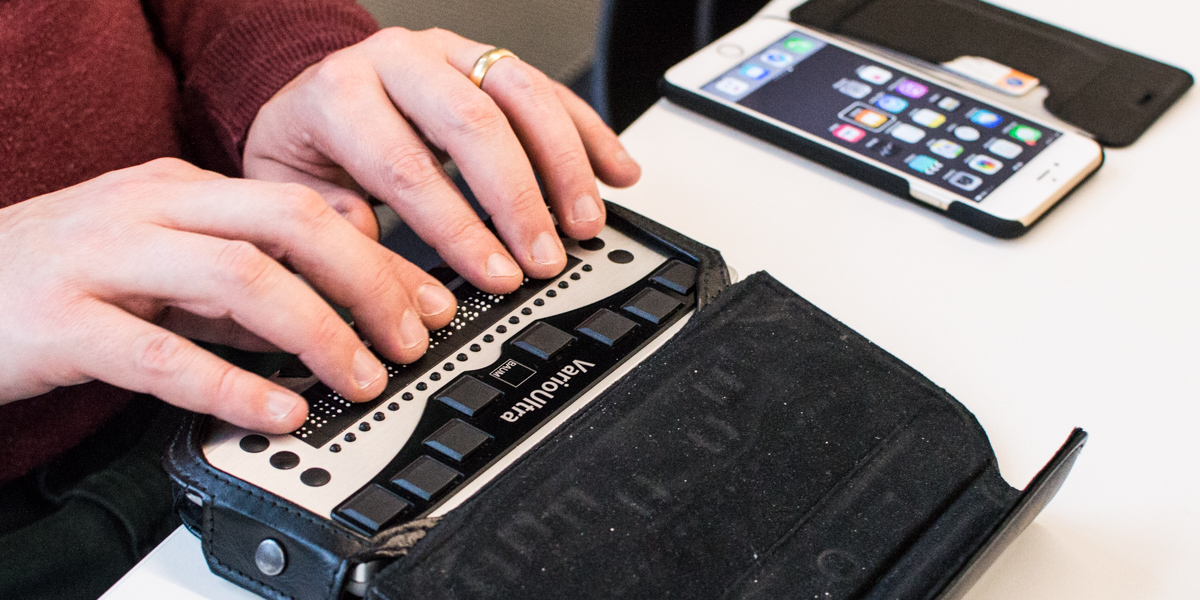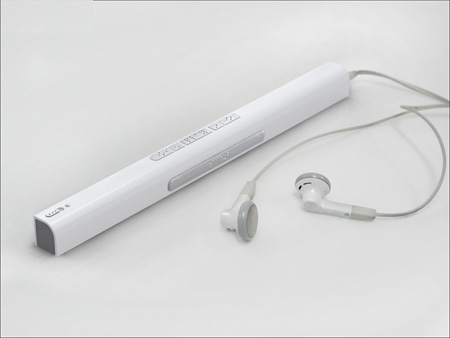Assistive Technology for the Blind: Innovations to Transform Lives
Empowering Freedom With Assistive Innovation for the Blind
The integration of assistive modern technology right into the lives of individuals with aesthetic impairments represents a substantial advancement in promoting independence and self-sufficiency. From innovative screen readers to advanced smart canes, these tools not just enhance daily navigating and communication however likewise empower customers to involve meaningfully in numerous facets of life. As we check out the myriad benefits and real-world applications of these modern technologies, it ends up being vital to check out the underlying factors that contribute to their performance and the possibility for future advancements in this important area.
Introduction of Assistive Technology

The advancement of assistive technology is based in principles of inclusivity and empowerment. Innovations in software, equipment, and sensory enhancements provide customers with options tailored to their certain needs. From display visitors that transform message to speech, to tactile gadgets that communicate information via touch, these devices transform the means individuals engage with their surroundings.
In enhancement to functional applications, assistive modern technology cultivates higher social incorporation and involvement in various markets, including education and learning and work (Screen readers for the blind). As study and growth continue to progress, the potential for assistive innovation to even more enhance the lives of aesthetically damaged individuals stays appealing, leading the way for a much more fair society where everyone can flourish
Kinds Of Assistive Devices
A range of assistive tools have emerged to support people with visual impairments, each created to meet particular demands and enhance daily functioning. These gadgets range from low-tech options to sophisticated advancements, offering diverse choices for individuals.
Low-tech gadgets consist of magnifiers and large-print materials that assist in analysis and writing. Braille devices, such as Braille styluses and slates, allow responsive reading and communication. Orientation and mobility aids, like white walking sticks, assist individuals browse their atmosphere safely.
On the higher end of the spectrum, electronic zoom systems and display viewers supply considerable assistance. Electronic magnifiers enable users to expand text and pictures on displays, while display visitors convert electronic material right into manufactured speech, promoting access to details on computer systems and smart devices.
Smart device applications also play a critical duty, supplying functions like text acknowledgment and navigation support. Wearable innovation, such as smart glasses outfitted with increased fact, is arising as an appealing tool to improve situational recognition.
Benefits of Assistive Technology
The assimilation of assistive innovation substantially boosts the quality of life for people with visual problems. These innovations empower users by advertising independence, allowing them to browse their environments more properly and carry out day-to-day tasks with greater convenience. Screen viewers and magnification software program allow people to gain access to electronic information, cultivating educational and expert possibilities that may have formerly been out of reach.
Additionally, assistive gadgets such as smart walking canes and GPS applications supply real-time navigating aid, boosting mobility and security. This increased autonomy not only enhances self-confidence however also motivates social engagement, enabling customers to take part more fully in their neighborhoods.
Assistive modern technology additionally facilitates interaction, helping individuals link with others with voice recognition and text-to-speech applications. This capability is crucial for keeping connections and accessing essential details.
Furthermore, the modification alternatives available with several assistive innovations make sure that individuals can tailor tools to their details needs, even more improving functionality and efficiency. In general, the advantages of assistive modern technology for people with aesthetic problems are extensive, advertising an extra comprehensive culture where every person can pursue their goals and goals.
Study and Success Stories
Highlighting the transformative influence of assistive innovation, numerous case research studies show how people with visual disabilities have efficiently integrated these devices into their everyday lives. One compelling instance involves an university student who utilized screen analysis software application to browse online resources and scholastic materials properly. This technology not only facilitated her education and learning yet also improved her confidence in joining conversations and group tasks.
Another study features an expert who utilizes a smartphone application developed for navigation and item recognition. By utilizing this app, he has actually regained autonomy in both his individual and job settings, permitting him to commute individually and involve with associates better.
Additionally, a retired person shared her experience with braille e-readers, which allowed her to access a large variety of Get More Info literature and stay gotten in touch with her community with publication clubs.
These success tales emphasize the critical function of assistive innovation in cultivating freedom, boosting top quality of life, and promoting social combination for individuals with visual disabilities (AI-powered visual aids). By embracing these cutting-edge tools, users can get over difficulties and confiscate possibilities that add to their professional and personal fulfillment

Future Patterns in Assistive Technology
Advancement in assistive technology is positioned to redefine the landscape of support for people with aesthetic problems. Arising fads emphasize the integration of expert system (AI) and equipment knowing, which boost the functionality of gadgets that assist with navigating and information availability. AI-driven applications are currently qualified of interpreting visual data in real-time, making it possible for customers to involve with their setting a lot more separately.
Furthermore, the growth of wearable technology is advancing quickly. Smart glasses geared up with enhanced reality (AR) can give audio summaries of environments, transforming exactly how users communicate with public spaces. These tools not just promote autonomy yet additionally foster social addition.
Furthermore, the Internet of Points (IoT) is making homes smarter, enabling smooth connection between assistive devices and everyday devices. This connection encourages individuals by allowing voice-activated controls and automated reactions tailored to specific demands.
Conclusion
Finally, assistive modern technology plays a critical duty in encouraging individuals with visual disabilities by enhancing their self-reliance and engagement with their environments. The varied range of applications and devices offered not just promotes navigation and communication however additionally advertises social assimilation and possibilities for personal and expert development. As innovations proceed in this area, the possibility for enhancing the lifestyle for those with aesthetic disabilities will increase, cultivating greater freedom and empowerment.
